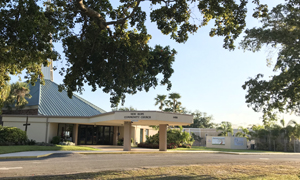Silencing the False Narrative
by Rev. Kirby Williams
Learning Jesus' proven formula for silencing false narratives with the uncompromised truth.
Text: Luke 14:1-6
Date: 04/07/2024, the Combined service.
Series: "Luke: Thy Kingdom Come" Part 144


Description:
Nestled in between Jesus' lament for Jerusalem and another warning of eschatological judgment, Luke includes a "living parable" where Jesus draws the anger of the Pharisees and lawyers for healing a man on the Sabbath. And once again, we will see how Jesus masterfully responds to their false narrative. Jesus is invited to a luncheon, where His Pharisee-host has prepared a trap for Him, by putting a man with dropsy right in front of Him. His idea is to tempt Jesus to defile the Sabbath by healing a man he feels is under God's judgment. We will analyze these and other false narratives Jesus is presented with, designed to expose Him as a sinner and discredit His claims to be the Messiah. But even though Jesus boldly heals the man, He will make it clear that by doing so, He glorifies God rather than breaking His commandments. Ultimately we will learn Jesus' formula for silencing the false narratives that we face-- by refusing to be sucked into the falsehoods, while standing firm for the uncompromised truth.
View:
Options:
I. Introduction, Luke 12:1.
II. Exposition of the text, Luke 14:1-6.
A. Context
B. The Sabbath healing of a man with dropsy.
1. At the house of a Pharisee, vs. 1.
a. Setting the scene.
i. On the Sabbath.
ii. The invitation to lunch, Luke 7:36, 11:37.
iii. Putting the two together, Luke 6:1,2,5.
iv. Another Jewish "ruler", Luke 8:41, 13:14.
v. Evidence of a setup, Luke 6:6-7.
b. About the Pharisees.
c. Wondering why.
i. Why the Pharisees invited Jesus.
ii. Why Jesus accepted, Acts 15:5, John 3:1, Phil. 3:5.
2. The obvious setup, vs. 2.
a. The man with "dropsy".
i. A statement of surprise.
ii. The reason for the surprise.
iii. A not-too-subtle trap, Luke 6:6.
b. Noticing the illogical hypocrisy of the trap.
c. Identifying a "false narrative".
i. A falsified situation.
ii. The "false dichotomy".
3. Jesus' response, vs. 3.
a. The expanded audience, Luke 11:38,42,45,46.
b. A far-reaching question.
i. A loaded word, Luke 6:5, Gal. 4:4.
ii. A masterful response.
4. The dramatic healing, vs. 4.
a. The silence of belligerence.
i. A "telling" silence.
ii. Reasons for silence.
1) Because they simply do not know.
2) Because they do not want to look foolish.
3) To nefariously suppress the truth.
a) If they answer "yes".
b) If they answer "no".
b. A demonstrative healing.
i. Looking at the words, Luke 23:26.
ii. Recognizing the false narratives.
5. Exposing the reality, vs. 5.
a. A textual anomaly, Luke 13:15.
b. A contentious interpretation, Ex. 20:8-11, 35:2, Num. 15:32.
6. The silence before the truth, vs. 6.
C. Interpretation
III. Application
IV. Conclusion



